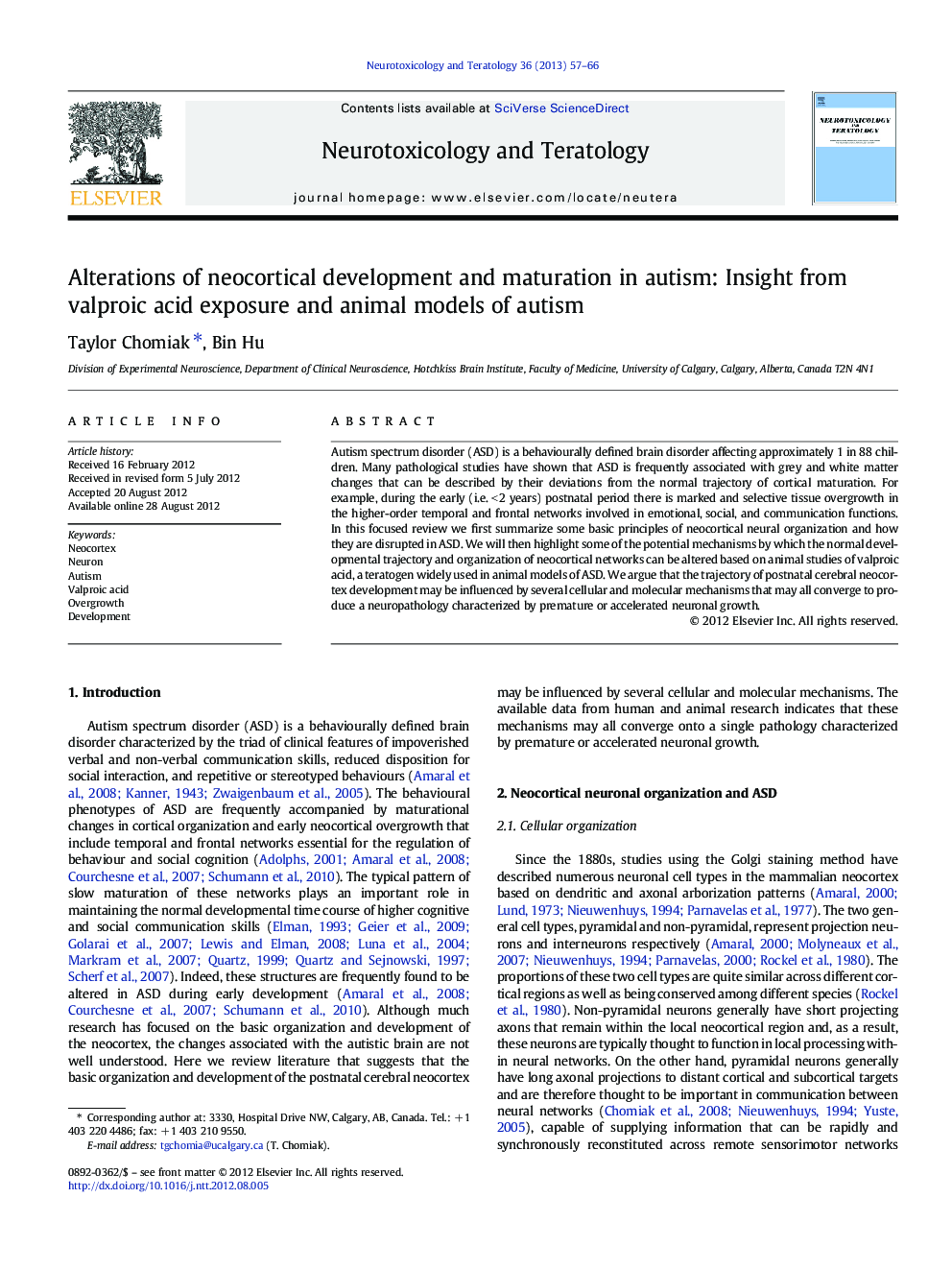| Article ID | Journal | Published Year | Pages | File Type |
|---|---|---|---|---|
| 2591415 | Neurotoxicology and Teratology | 2013 | 10 Pages |
Autism spectrum disorder (ASD) is a behaviourally defined brain disorder affecting approximately 1 in 88 children. Many pathological studies have shown that ASD is frequently associated with grey and white matter changes that can be described by their deviations from the normal trajectory of cortical maturation. For example, during the early (i.e. < 2 years) postnatal period there is marked and selective tissue overgrowth in the higher-order temporal and frontal networks involved in emotional, social, and communication functions. In this focused review we first summarize some basic principles of neocortical neural organization and how they are disrupted in ASD. We will then highlight some of the potential mechanisms by which the normal developmental trajectory and organization of neocortical networks can be altered based on animal studies of valproic acid, a teratogen widely used in animal models of ASD. We argue that the trajectory of postnatal cerebral neocortex development may be influenced by several cellular and molecular mechanisms that may all converge to produce a neuropathology characterized by premature or accelerated neuronal growth.
► Early cortical overgrowth has been proposed as a core mechanism of autism. ► Overgrowth is particularly prominent in temporal and frontal association networks. ► Many cellular and molecular mechanisms can alter the trajectory of cortical growth. ► These mechanisms may all converge onto a single pathology of early neuronal growth.
